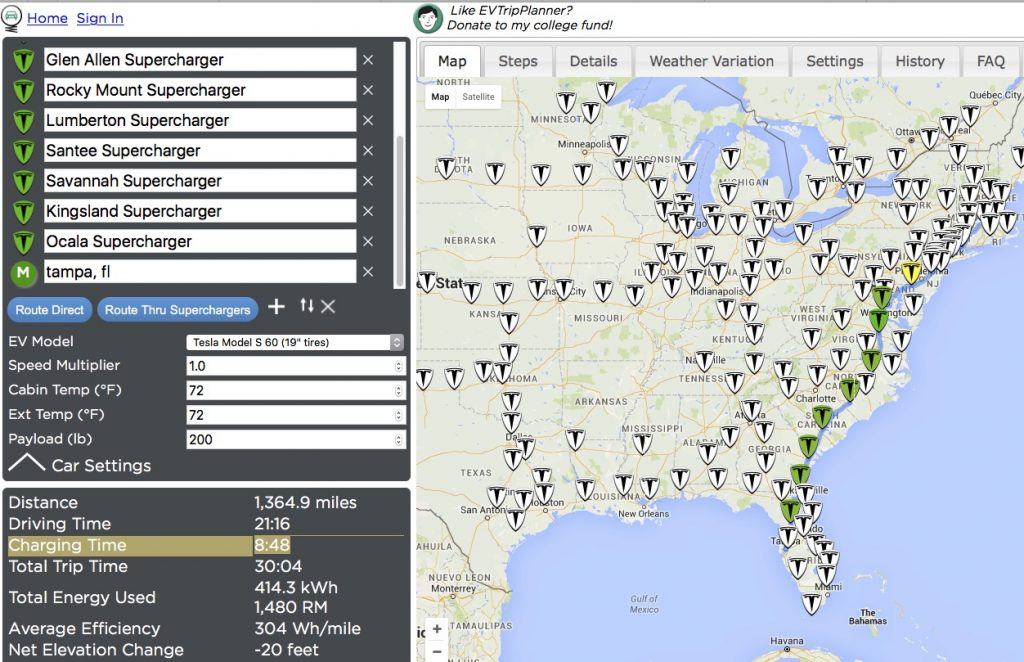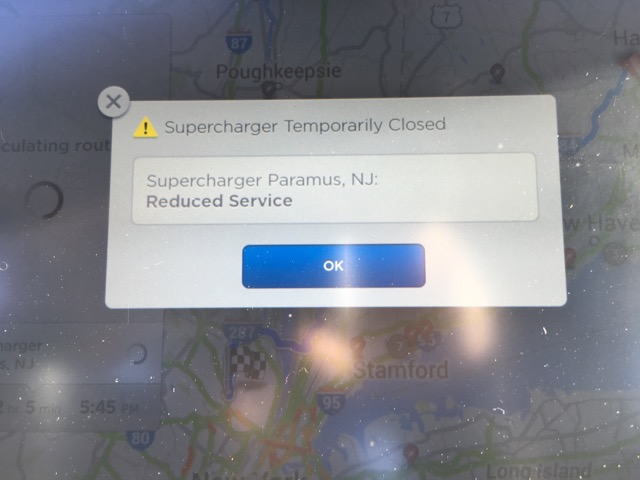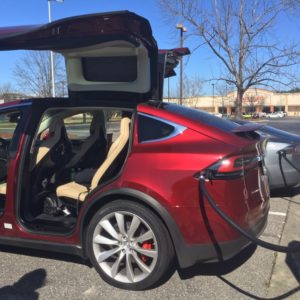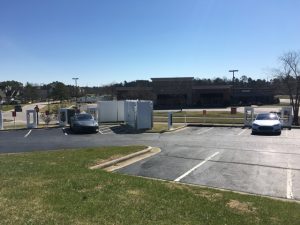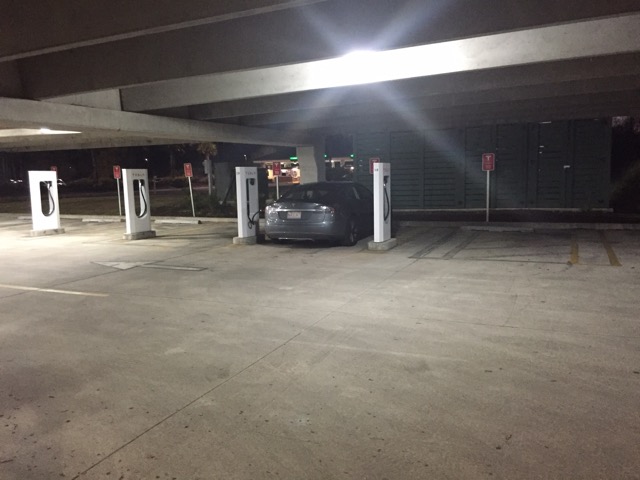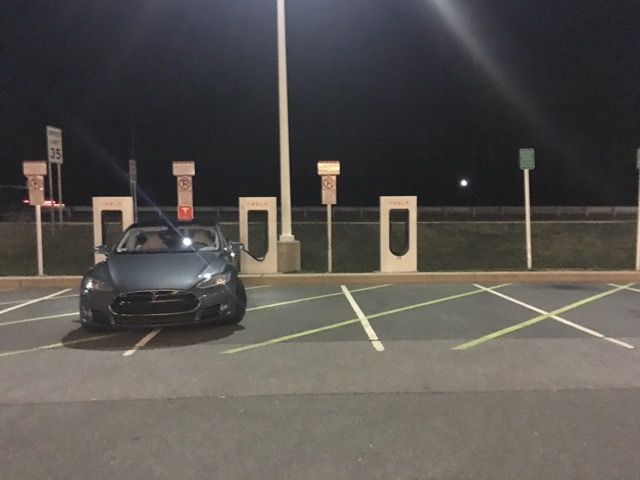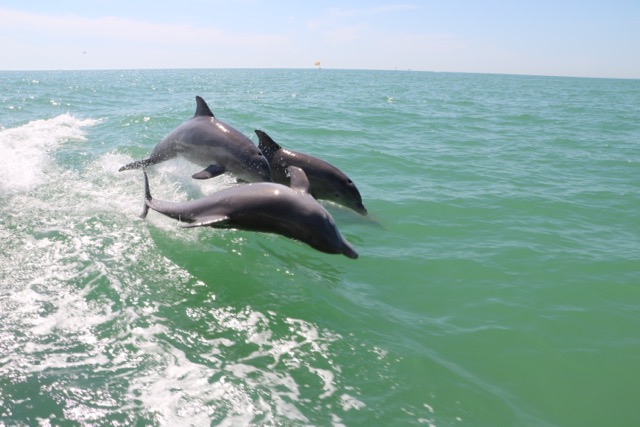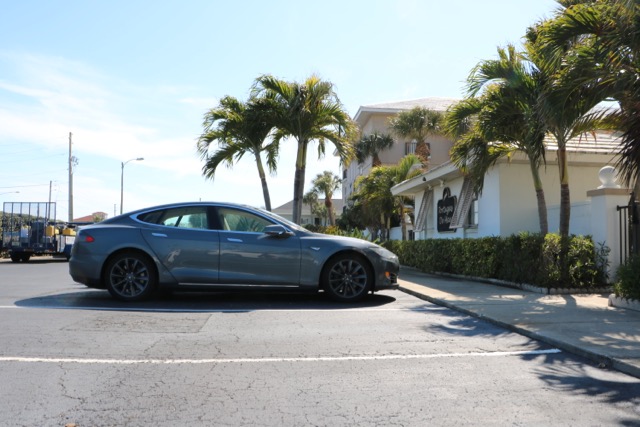

Lifestyle
5 lessons learned from a long-distance Tesla road trip
Having logged over 60,000 miles in the past two years with my Model S, I figured my upcoming journey from Boston to Tampa Bay, Florida would be a pretty routine run-of-the-mill Tesla road trip, but soon found out that I still had plenty more lessons to learn when it came to long distance travel.
Update/Note: I realized after I saw a number of comments to this post that I neglected to mention that I didn’t use Autopilot for any of this trip. My Model S, an April 2014 build, sadly doesn’t have the hardware or capability. The trip would have taken the same time with Autopilot but would likely have had some other kinds of experiences to share (good and bad i’m sure).
Trip Routing
Before embarking on my road trip, I mapped out my entire drive using Google directions which indicated that the drive from Boston, MA to Tampa, FL would take approximately 20 hours. Google factors in traffic and speed of travel, but doesn’t add any time to refuel, eat, etc. If you’re adventurous you can simply hop in your Tesla, input your destination address into the onboard Nav without much planning and begin driving. The Tesla navigation system will guide you to your destination while making use of Superchargers along the way. If you get tired you can always find a hotel, take a pit stop and then carry on the next day.
For many of us, this casual and unplanned approach to a lengthy trip isn’t always ideal. We want to know where we’ll be staying the night and know we’ll have a bed in a nice hotel that offers food at the time we’ll be arriving at. Doing the preparation while sitting in front of your Tesla navigation screen could be frustrating. And if you want to add a stop somewhere along the way, forget it, Tesla doesn’t support that.
Also, beware the onboard Tesla trip planner can be steadfast in its ways. For instance it flat out refused to route us through a convenient charger in Paramus, NJ because of a temporarily “Closed” Supercharger.
This had us quite concerned as we were already pretty committed to going in that direction. A quick call to the Tesla store at that charger site revealed that theres nothing wrong with the charger. Evidently the charging speeds are slow after 10pm due to some ongoing battle between Tesla and the local power company. As a result power at the Supercharger station is limited at night. But as long as we were visiting before 10pm we were clear to use the charger. This type of information needs to be conveyed to drivers.
Fortunately there’s a site that helps with some of the planning called EVTripPlanner. This site will help perform similar calculations on what charging stops are needed along the way and also allows you to add waypoints if you want to stop at specific locations outside of Tesla Superchargers. I used EVTripPlanner to plan my trip to Florida.
Calculating Driving Time
At the time I planned the trip, EVTripPlanner did not have the ability to track charging times. Though I knew that had to factor in the amount of time spent at each charger before computing my total drive time, I severely underestimated the amount of time needed for charging. EVTripPlanner has since added the feature to take into account charging times.
If you take a look at the app now for the same route, EVTripPlanner will tell you that charging will add and additional 8 hours and 48 minutes of charging through a combined 11 Supercharger stops along the way. Your 21 hour drive turns into a 30 hour drive. This backs into an increase of time spent by 43%.
When I did the math myself I used an average of 30 minutes per stop. The problem with that approach is somewhere along the way I did the math wrong and things didn’t add up right. Perhaps I missed a leg somewhere along the way. More on that later.
EVTripPlanner doesn’t currently provide an “elapsed time” or “time of day” readout and the data is difficult to retrieve especially if you plan on importing it into Excel or Google sheets.
Planning Mistake 1 – Cold Battery Pack
On the way down I couldn’t leave until 2pm, so we left and ultimately hit East Coast traffic for rush hour. This added time to the drive but fortunately doesn’t use extra range as EVs are even more efficient when moving slowly. Between the traffic and the expected charging stops we got to the hotel in Woodbridge, VA quite late. Rather than charging up for the next day that evening, we decided to hit the sack and charge up in the morning. This was a mistake.
It got down to about 40 degrees overnight and I had intentionally picked a hotel near a Supercharger. The next morning when we went to charge the charge was more than 30% slower than average. Reason being cold battery packs don’t charge as fast as warm battery packs, something I already knew but hadn’t considered late at night. We would have been better off charging the night before when our battery was warm. That or driving for a while before charging would have been good had we had enough charge to be able to do so.
Planning Mistake 2 – Charging Speeds
 While we know that most Tesla Superchargers can achieve 170 miles of range in 30 minutes, we found out the hard way that not all chargers can deliver this. Despite a warm pack and ideal charging conditions we found that some of the chargers are significantly slower than others. It’s still not as bad as trying to charge on a cold pack, but the end result is a 25% slower charging speed than the usual.
While we know that most Tesla Superchargers can achieve 170 miles of range in 30 minutes, we found out the hard way that not all chargers can deliver this. Despite a warm pack and ideal charging conditions we found that some of the chargers are significantly slower than others. It’s still not as bad as trying to charge on a cold pack, but the end result is a 25% slower charging speed than the usual.
Our average charge rate turned out to be 120 rated miles added to the batter pack in 30 minutes of charging time (240 rated miles added per hour) which is significantly lower than Tesla’s number.
Planning Mistake 3 – Round Trips
Our average Supercharger stop time was 34 minutes. While Tesla and EVTripPlanner recommended eleven Supercharger stops, we ended up making twelve stops. The reason for that was we didn’t have enough charge to arrive at our stay, cruise the town and get back to the Supercharger network on the leg to go back home.
As a result of that we pit stopped at one additional charger and charged enough to allow for comfortable driving around town and enough juice to get back to that Supercharger on the way home. This added time.
Planning Mistake 4 – Battery Buffer
 Tesla has been adjusting the onboard trip planner over time. In the early days it wasn’t possible to route via Superchargers and then they added it but it was very conservative and often buggy. They’ve continued to make updates to it (although slowly) and now it is a lot more aggressive. For most of my legs it was calculating routes that had me arriving at the next charger with a buffer of 11-12% remaining battery capacity — that’s about 32 miles of safety.
Tesla has been adjusting the onboard trip planner over time. In the early days it wasn’t possible to route via Superchargers and then they added it but it was very conservative and often buggy. They’ve continued to make updates to it (although slowly) and now it is a lot more aggressive. For most of my legs it was calculating routes that had me arriving at the next charger with a buffer of 11-12% remaining battery capacity — that’s about 32 miles of safety.
Teslas charge faster from a lower starting state of charge. Charging from 0 to 50 is a lot faster than charging from 20 to 70. So generally you want to arrive at the next charger with as low a state of charge and charge just enough to get to the next stop safely.
To keep things moving along and not lose time you need to watch your charge and hop back in the car as soon as the car says you’re safe to get to the next stop. Any more time and it’s un-optimal as a higher state of charge results in slower charging for your next charge.
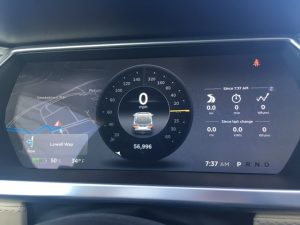
Single digit margins
Under ideal circumstances Tesla’s buffer would be fine since their computations take into account temperature and elevation changes. The problem is they don’t factor in wind or driving speeds.
I typically drive about 5mph over the speed limit. These days this classifies me as a “slower” driver but it’s what I’m comfortable with. In MA that means driving about 70mph on the highways but down towards Florida you’re doing 75 and still considered slow. After taking one of the recommended charging stops the Model S was predicting that we would arrive at our next stop with 12% charge remaining, but then it started to drop. 12% went to 11%, then 10%, then all the way down to 8%. There were no other chargers along the way and the estimated remaining charge continued to drop rapidly. I dropped my speed from 75 to 65 mph and arrived at the next charger with 9% remaining (24 rated miles). When all else fails, slow down.
From that point on, each time we charged and saw the vehicle telling us we would arrive at the next stop with 12% battery remaining, we waited to charge a few extra minutes just as added safety. It added time to our overall trip but at that point we were happy gaining that additional peace of mind.
Planning Mistake 5 – Calculate Twice, Drive Once
On the second day of driving we were making good progress, but as the day went on we realized that rather than getting to Tampa around midnight it would be more like 3am and we’re not the kind of drivers that like driving late at night. Fortunately a quick call back to my wife who was in front of a computer got us a hotel reservation and off the road before it got too late.
Somehow along the way the initial calculations were off by 3 hours. I suspect that I forgot to factor in one of the legs. Since there really isn’t a single system to help plan the entire trip, I was at the mercy of being human and making a mistake. I should have spent a bit more time double checking my planning before taking off.
Other Learnings
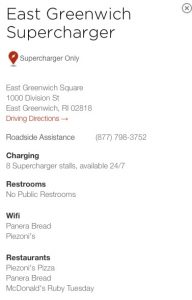 There’s a few other things I wanted to mention. First, as you drive from charger to charger on a long road trip a common question is “Whats at the next stop?” That question is still pretty painful to answer. You’d think you could just click on the charger icon and see the amenities, but it doesn’t. Apps like Teslarati’s own app (iOS | Android) aim to provide this type of info through crowd sourced data from other Tesla drivers, but even that requires several clicks and scrolling before you get to the information, plus you’re supposed to be driving. A simple page allowing easy access to nearby Supercharger details or next charger would be very helpful on a trip like this. Was there a Chick-fil-A at the next stop or just another terrible Texas Roadhouse? We had to know!
There’s a few other things I wanted to mention. First, as you drive from charger to charger on a long road trip a common question is “Whats at the next stop?” That question is still pretty painful to answer. You’d think you could just click on the charger icon and see the amenities, but it doesn’t. Apps like Teslarati’s own app (iOS | Android) aim to provide this type of info through crowd sourced data from other Tesla drivers, but even that requires several clicks and scrolling before you get to the information, plus you’re supposed to be driving. A simple page allowing easy access to nearby Supercharger details or next charger would be very helpful on a trip like this. Was there a Chick-fil-A at the next stop or just another terrible Texas Roadhouse? We had to know!
We also experienced a wide range of charger types. From the usual 8 in a row, back in variety, to those where you pull head in in an airport parking garage and have to get your parking ticket stamped.
There were also those those with poorly painted lines providing no clue on how you’re supposed to drive into the stall.
All this so I could introduce my Tesla to a palm tree for the first time.
And get in a few bike rides while New England tried to thaw out.
Summary
Before this trip I had dozens of Tesla road trips under my belt and have visited chargers in many states at all different times of the year. I was very familiar with the mechanics of an EV road trip, charging times and what to expect. My friend wanted to go to Florida around the same time and had never taken a road trip in an EV before. I warned him up front about the charging times and he assured me it was not a problem.
By the end of the trip he said he didn’t regret taking the trip, but next time he’d take an ICE car or fly — adding 40% to your travel time is unacceptable if you’re trying to get somewhere and not just touring the country. It was hard to argue with him.
While records have been set driving cross country in a Tesla, those are usually done with multiple drivers and with very little down time. That style of driving isn’t for everyone.
For myself, I still dream of driving across the country to California someday in my Tesla. I need to rest up first as the FL trip took away some of my desire to do that. Also I’m worried that once I get there I wouldn’t want to drive all the way back home :p
If you do plan to do a longer road trip, spend extra time in the planning phase. New tools and sites continue to be developed to simplify the process, but make sure you’ve had some experience with shorter trips first. With good planning and a relaxed approach you can still be jumping for joy at the end of a successful long road trip in your Tesla.

Lifestyle
Elon Musk seemingly confirms Cybertruck gift to 13-year-old cancer fighter
Diagnosed in 2018 with a rare form of brain and spine cancer with no cure, the teen has undergone 13 surgeries by the time he was 12.
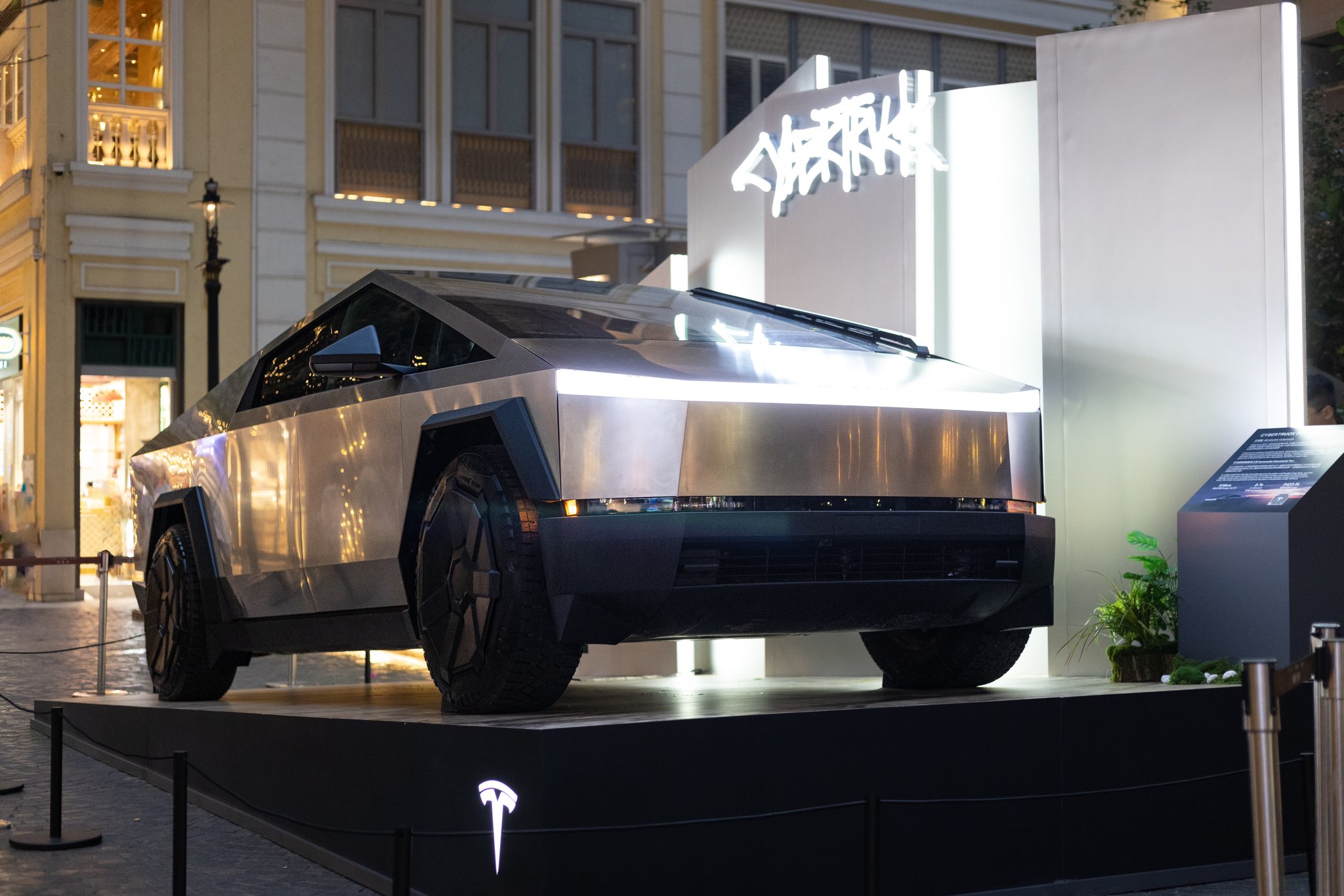
Elon Musk has seemingly confirmed that he will be sending a Tesla Cybertruck to 13-year-old Devarjaye “DJ” Daniel, a 13-year-old Houston boy fighting brain cancer. The teen was recognized as an honorary Secret Service member by U.S. President Donald Trump during his address to Congress on Tuesday.
A Chance Meeting
The Tesla CEO’s Cybertruck pledge was mentioned during DJ’s short interview with CNN’s Kaitlan Collins. When Collins asked the 13-year-old what he told the Tesla CEO, DJ answered that he asked for a Cybertruck.
“I said, ‘can you do me a big favor, when you get back to Houston can you send us a Cybertruck down there?’” the cancer fighter stated.
Daniel noted that Musk responded positively to his request, which was highlighted by Collins in a post on X. Musk responded to the post with a heart emoji, suggesting that he really will be sending a Cybertruck to the 13-year-old cancer fighter.
Teen’s Cancer Battle Inspires
Diagnosed in 2018 with a rare form of brain and spine cancer with no cure, Daniel has undergone 13 surgeries by the time he was 12. During his speech, Trump highlighted the 13-year-old’s long battle with his disease.
“Joining us in the gallery tonight is a young man who truly loves our police. The doctors gave him five months at most to live. That was more than six years ago. Since that time, DJ and his dad have been on a quest to make his dream come true,” Trump stated.
Daniels officially received an honorary badge from U.S. Secret Service Director Sean Curran, to much applause during the event.
Surprisingly Partisan
While Daniels’ story has been inspiring, Trump’s focus on the 13-year-old cancer fighter has received its own fair share of criticism. MSNBC host Nicolle Wallace, while referencing Daniels’ love for law enforcement, noted that she is hoping the 13-year-old never has to defend the U.S. capitol against Trump supporters. “If he does, I hope he isn’t one of the six who loses his life to suicide,” Wallace stated.
Anti-Musk and Trump accounts on X have also thrown jokes at the cancer fighter’s honorary badge, with some dubbing the 13-year-old as a “DEI hire” that should be looked into by DOGE.
Lifestyle
Tesla owner highlights underrated benefit of FSD Supervised
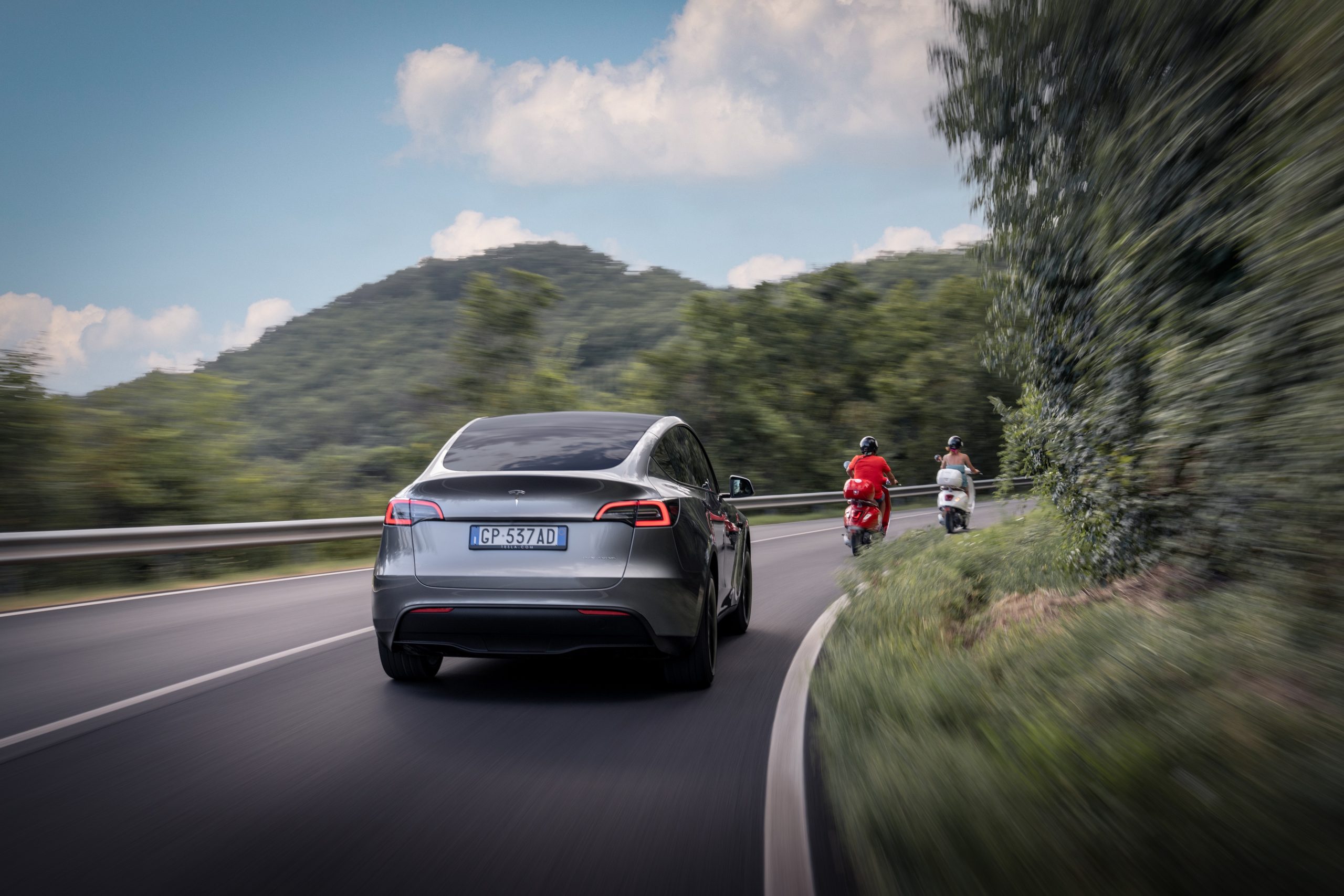
Elon Musk has been pretty open about the idea of FSD being the difference maker for Tesla’s future.
If Tesla succeeds in achieving FSD, it could become the world’s most valuable company. If it doesn’t, then the company would not be able to reach its optimum potential.
FSD Supervised’s safety benefits:
- But even if FSD is still not perfect today, FSD Supervised is already making a difference on the roads today.
- This was highlighted in Tesla’s Q4 2024 Vehicle Safety Report.
- As per Tesla, it recorded one crash for every 5.94 million miles driven in which drivers were using Autopilot technology.
- For comparison, the most recent data available from the NHTSA and FHWA (from 2023) showed that there was one automobile crash every 702,000 miles in the United States.
This morning, Tesla FSD proved to be an absolute godsend. I had to take my brother-in-law to the hospital in Sugar Land, TX, which is 40 miles away, at the ungodly hour of 4 AM. Both of us were exhausted, and he was understandably anxious about the surgery.
— JC Christopher (@JohnChr08117285) January 29, 2025
The convenience of…
FSD user’s tale:
- As per an FSD user’s post on social media platform X, FSD Supervised was able to help him drive a relative to a medical facility safely even if he was exhausted.
- During the trip, the driver only had to monitor FSD Supervised’s performance to make sure the Tesla operated safely.
- In a vehicle without FSD, such a trip with an exhausted driver would have been quite dangerous.
- “This morning, Tesla FSD proved to be an absolute godsend. I had to take my brother-in-law to the hospital in Sugar Land, TX, which is 40 miles away, at the ungodly hour of 4 AM. Both of us were exhausted, and he was understandably anxious about the surgery.
- “The convenience of sending the hospital’s address directly from my iPhone to my Tesla while still inside my house, then just a single button press once inside, and 40 miles later we were precisely in front of the hospital’s admissions area.This experience really underscores just how transformative this technology can be for society,” Tesla owner JC Christopher noted in his post.
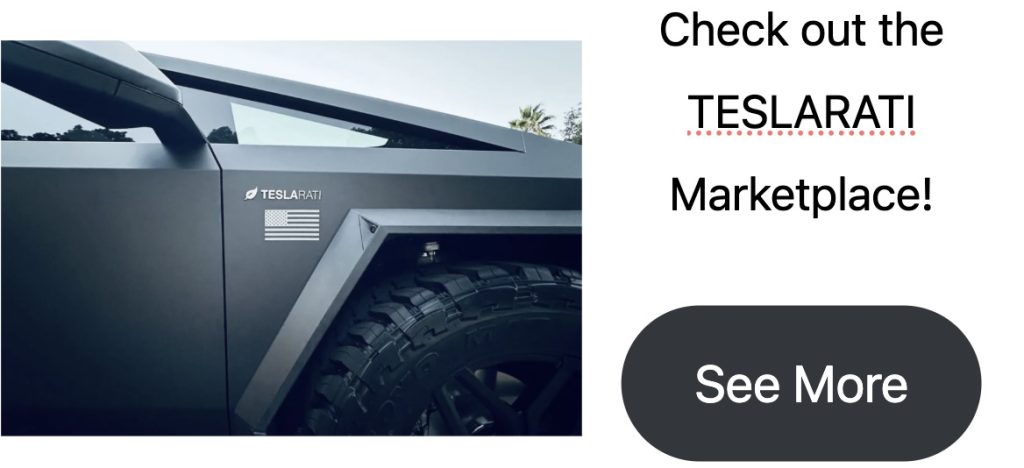

Don’t hesitate to contact us with news tips. Just send a message to simon@teslarati.com to give us a heads up.
Lifestyle
Tesla Optimus “stars” in incredible fanmade action short film
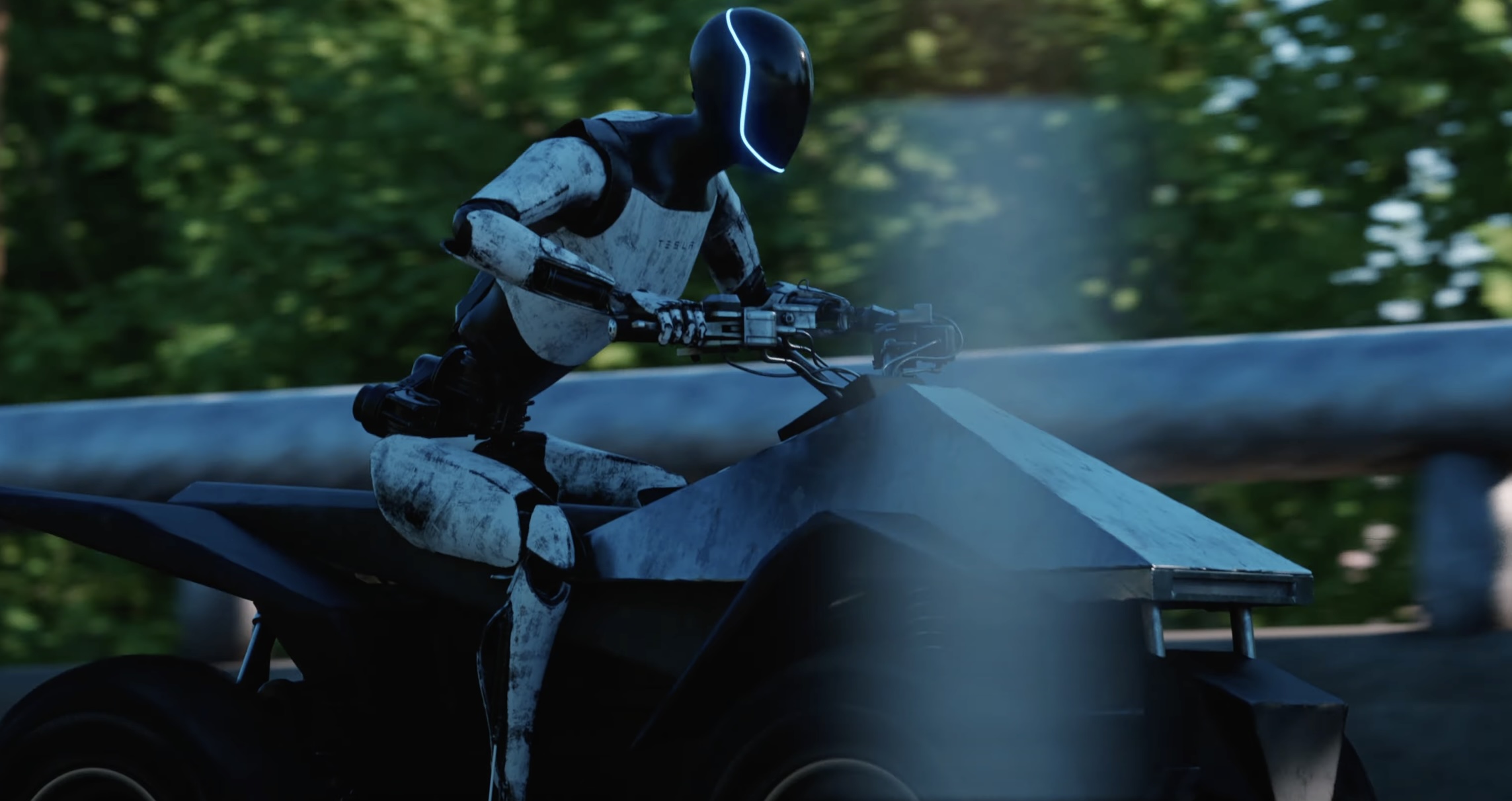
There are few things that prove an enthusiast’s love towards a company more than a dedicated short film. This was highlighted recently when YouTube’s SoKrispyMedia posted a 10-minute action movie starring Optimus, Tesla’s humanoid robot, as well as several of the company’s most iconic products.
The video:
- Shot like a Hollywood action flick, the video featured a rather humorous plot involving a group of thieves that mistakenly targeted a Tesla Model 3 driver.
- The Model 3 driver then ended up speaking to Tesla for assistance, and some high-octane and high-speed hijinks ensued.
- While the short film featured several Tesla products like the Model 3, Superchargers, and the Cybertruck, it is Optimus that truly stole the show.
- Optimus served several roles in the short film, from an assistant in a Tesla office to a “robocop” enforcer that helped out the Model 3 driver.
Future Robo-cop @Tesla_Optimus
— SOKRISPYMEDIA (@sokrispymedia) January 12, 2025
full video: https://t.co/TXpSRhcP5K pic.twitter.com/YFHZ7siAP7
Cool inside jokes:
- The best Tesla videos are those that show an in-depth knowledge of the company, and SoKrispyMedia definitely had it.
- From the opening scenes alone, the video immediately poked fun at TSLA traders, the large number of gray Tesla owners, and the fact that many still do not understand Superchargers.
- The video even poked fun at Tesla’s software updates, as well as how some Tesla drivers use Autopilot or other features without reading the fine print in the company’s release notes.
- The video ended with a tour de force of references to Elon Musk products, from the Tesla Cybertruck to the Boring Company Not-a-Flamethrower, which was released back in 2018.
Check out SoKrispyMedia’s Tesla action short film in the video below.
Don’t hesitate to contact us with news tips. Just send a message to simon@teslarati.com to give us a heads up.
-

 News2 weeks ago
News2 weeks agoTesla aiming to produce first “legion” of Optimus robots this 2025
-
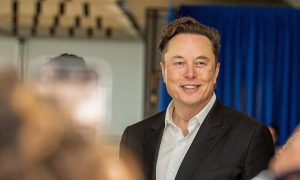
 Elon Musk1 week ago
Elon Musk1 week agoTesla CEO Elon Musk’s simple message to vandals
-
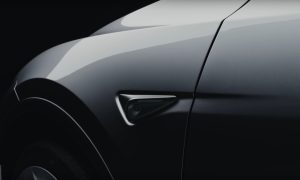
 Elon Musk2 weeks ago
Elon Musk2 weeks agoElon Musk confirms two measures Tesla is taking to fight vandalism
-
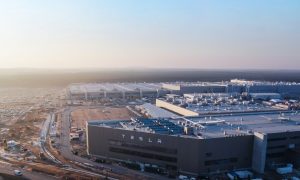
 News2 weeks ago
News2 weeks agoTesla’s Giga Berlin director responds to anti-Musk criticism
-
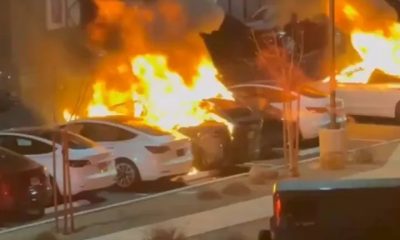
 Elon Musk1 week ago
Elon Musk1 week agoTesla vandal who lit Las Vegas repair center on fire arrested
-
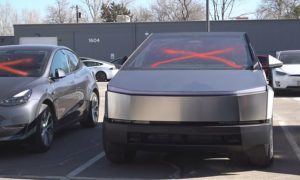
 Elon Musk2 weeks ago
Elon Musk2 weeks agoTesla owners doxxed by controversial anti-DOGE website in clear intimidation tactic
-

 Elon Musk1 week ago
Elon Musk1 week agoElon Musk clarifies Trump tariff effect on Tesla: “The cost impact is not trivial”
-
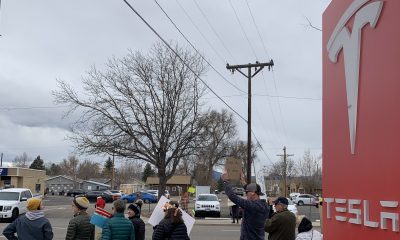
 Elon Musk1 week ago
Elon Musk1 week agoTesla vehicles hit by ATV, suspect caught by Sentry Mode
